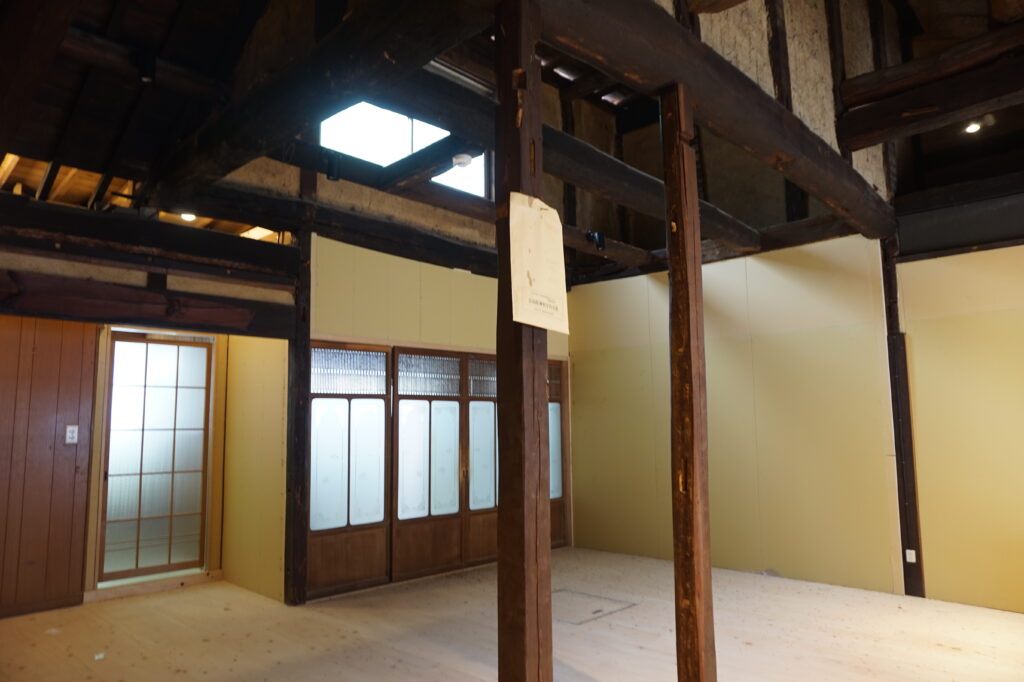The building had been vacant for almost ten years and some of the posts and beams were damaged, so we applied a coat of Hiba wood oil.
I went with Hiba wood oil because I had previously done an interview at a wooden house built only using Hiba from Aomori Prefecture, so I understood its value. The house had a great wooden scent, and the owner assured me that almost no mosquitos or insects came inside even in the summer.
Hiba wood oil is made by extracting essential oil from Aomori Prefecture’s Hiba trees. Applied to wood, it gives off the comforting scent of Hiba that is relaxing to human and also acts as an insect repellant. Aomori Hiba was actually used in traditional folk residences for its insect repelling properties, the same of which is true for iron oxide and persimmon tannin.
We were taught that red iron oxide and persimmon tannin are also alternatives to Hiba wood oil, both of which are commercialized and said to be easy for amateurs to use.
Around the Seto Inland Sea area, iron oxide and persimmon tannin seem to have been mainstream. Iron oxide had been used all around our house here in Ondo, the posts under the floor painted red without any insect damage. I always found myself thinking how there are so many bugs whenever I would go to the outer islands, so as a traditional folk residence guest house, we had the important mission of also figuring out how we would deal with them.
I purchased some Hiba wood oil online to incorporate it in our guest house right away. Expecting to use quite a lot, I bought four roughly 1.5L bottles.
Pouring the Hiba wood oil from its plastic container into a paint bucket, we then applied it with a brush. It enhanced not only the scent but also the color of the wood, giving it a deep luster. The entryway’s atmosphere improved a great deal and I grew excited, as though I was watching the building come back to life.


